I had never heard of pencil repair or restoration until I came across this link on the Pencil Pages site.
I’m not sure how healthy spray paint would be, nor will I attempt this myself. But is certainly amusing.
Link: Pencil Restoration 101

pencil talk | pencil reviews and discussion
exploring the art and science of pencils since 2005
I had never heard of pencil repair or restoration until I came across this link on the Pencil Pages site.
I’m not sure how healthy spray paint would be, nor will I attempt this myself. But is certainly amusing.
Link: Pencil Restoration 101
Thanks to those who voted or left comments in this informal poll.
Unsharpened pencils were preferred, with the final tally being 35 for unsharpened, 17 for sharpened.
fixedgearfiend asked, “How are the pencils that come pre-sharpened, sharpened?” Staedtler’s Pencil Facts website has a video that very briefly shows factory sharpening. The machine is moving quickly, and the video is quite small, so it’s hard to give too much description – but it seems to be capable of sharpening several pencils in a second.
Kent mentioned the retail experience. Stores often have scratch pads to try out pens, pencils, and markers – but that won’t work with unsharpened pencils. So retail needs may be another factor in a manufacturer’s decision.
I wonder what the subject of the next poll should be.
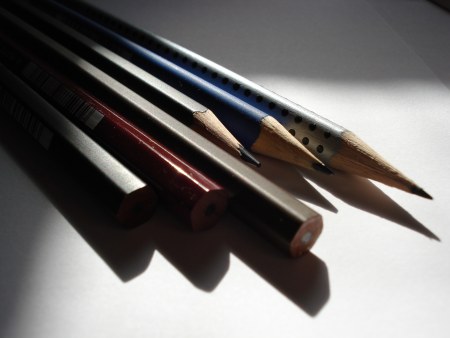
New pencils are sold both sharpened and unsharpened. The major European manufacturers (Staedtler, Faber-Castell, Derwent, Lyra, Stabilo, etc.) all typically sell their pencils pre-sharpened. In contrast, the Japanese (Kita-Boshi, Pentel, Mitsubishi, Tombow) and American (Sanford, Dixon) manufacturers generally sell pencils unsharpened. There are of course exceptions.
Pre-sharpening can provide a convenience factor to consumers. But it also has drawbacks – the pencils are more likely to get broken in transport from store to home/office. As well, the angle of sharpening might be different than that provided by your preferred sharpener, and require a couple of unideal sharpenings before it’s right.
It also deprives one of the pleasant sharpening ritual, the defined initiation of a new pencil.
On the plus side, a pre-sharpened pencil is instantly useable, and sharpeners aren’t always at hand or convenient to use. The factory sharpening could be viewed as a small courtesy towards the customer.
So what do you prefer? Feel free to leave a comment as well as vote in this poll.
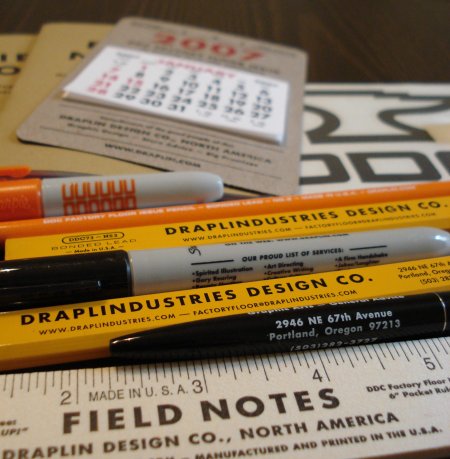
I just received a Draplin Design Co. Factory Floor Issue Longhand Set. It’s like an early Hallowe’en loot bag for stationery/design lovers.

The shop floor never looked so good. The set included:
Field Notes ruler
Field Notes sharpener
Field Notes notebooks
Draplindustries carpenter pencils
Draplin round pencil
Draplindustries ballpont pen
Draplin Sharpie
Draplin Mini-Sharpie
Draplin Calendar
Draplin Anvil decal
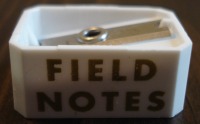
This was much more than I ordered. They threw in a number of these items as extras.
I don’t know how they did it, but they’ve got the retro industrial look down pat. With many touches of whimsy.

The fun doesn’t end there. The envelope in which this was delivered was addressed “Canada, eh!”, which someone at the post office found the need to manually annotate as “CANADA”.

There is something that just feels great about a talented designer taking on these “ordinary” items. I will definitely keep an eye on Draplin for their future projects.
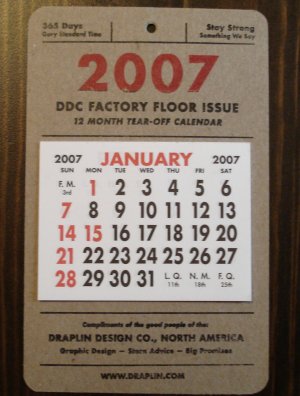
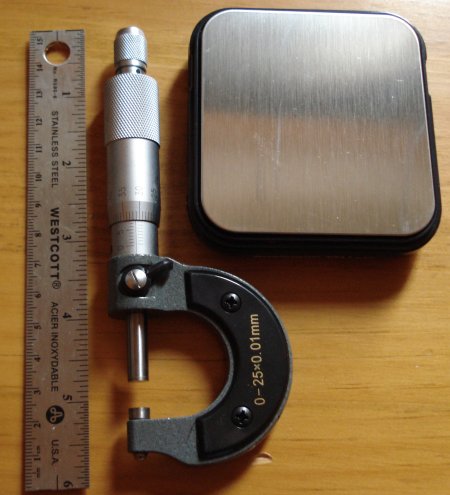
Okay, maybe the same amount of conversation. But in some cases, less subjective. I’ve acquired a few tools to assist in describing some of the physical properties of pencils – a ruler, micrometer, and scale. (Well, I already owned the ruler.)
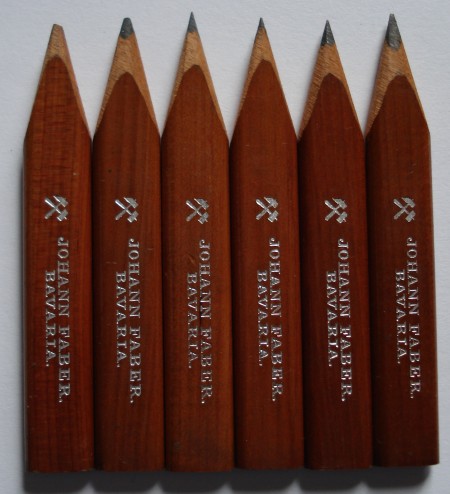
A special treat today – we are taking a look at “flat cedar” pencils. This is a historic pencil variety, no longer manufactured. They were made for waistcoat pockets, according to Henry Petroski’s The Pencil. And they are indeed very portable, even if you don’t have a waistcoat pocket.

I’ve had for some while an old Eberhard Faber pencil in this style. It is roughly in the shape of a miniature carpenter’s pencil, though with a round core. The pencil fits in a case with a cover that is removed and placed on the base to form an extender. I’m not sure of the material – tin or nickel would be my guesses – but it has survived well. “E. Faber, U.S.A.” is inscribed.

The pencil is already quite worn, and I was happy to find some refills – a partially filled box of “Johann Faber’s flat cedar refills with black leads. Made in Bavaria. No. 5837.”
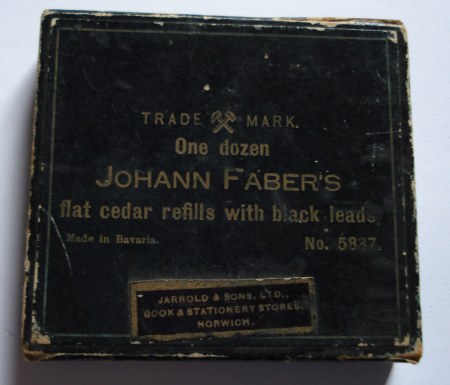
Unfortunately – they don’t fit! The various branches of the Faber family are known to have feuded, and it may be that these are different formats by design. (The J. Faber is narrower than the E. Faber.)
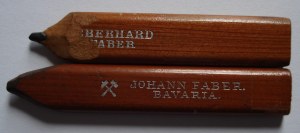
I’ll have to keep my eye out for flat cedar pencil supplies.
